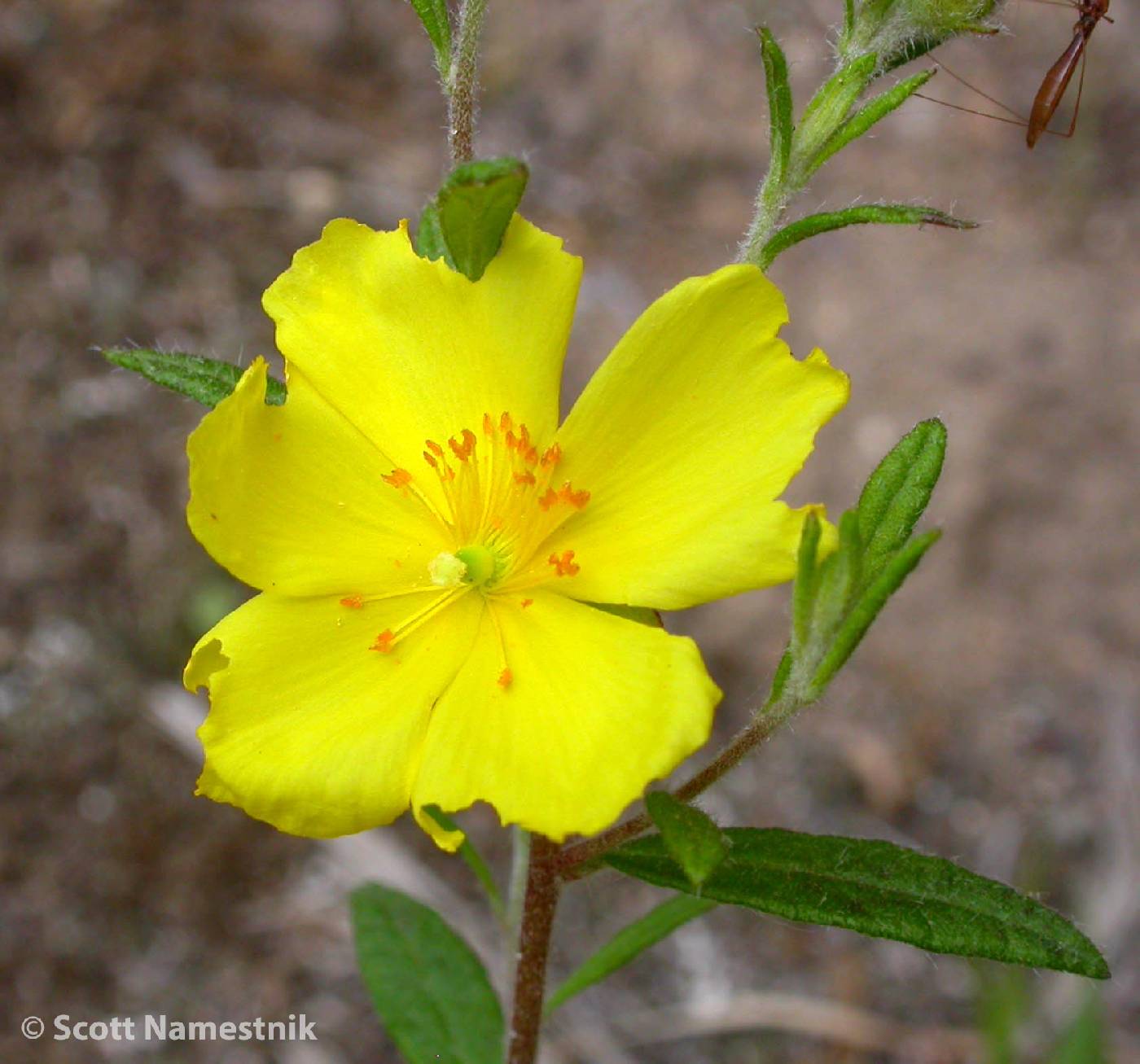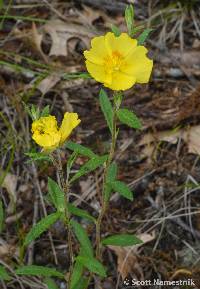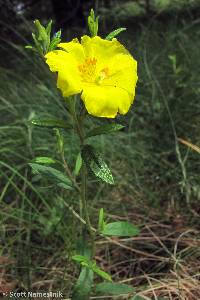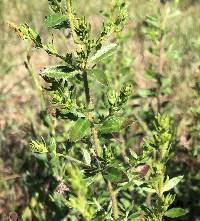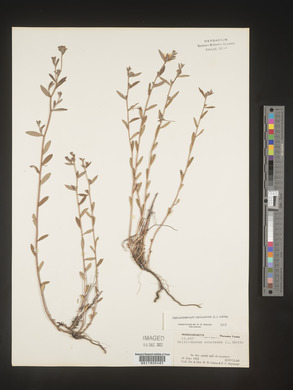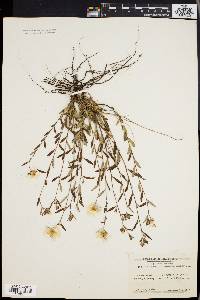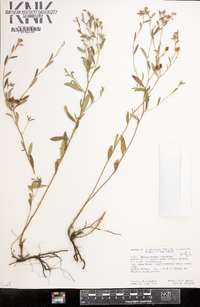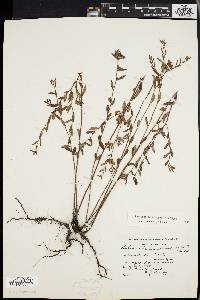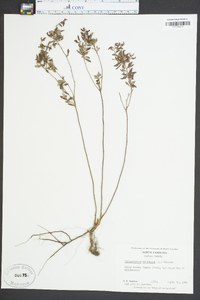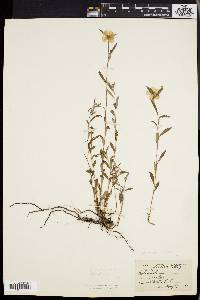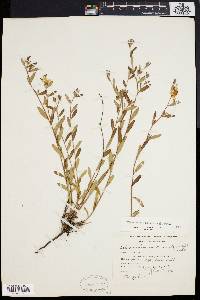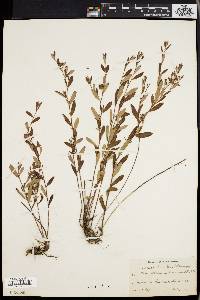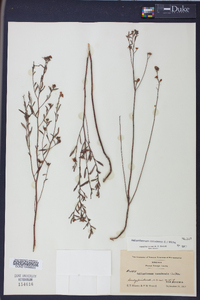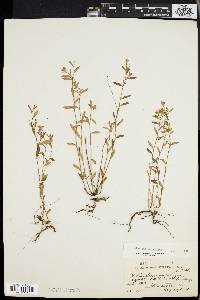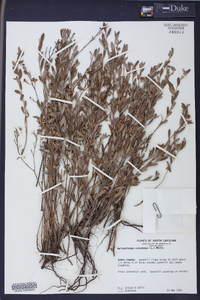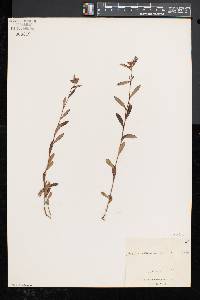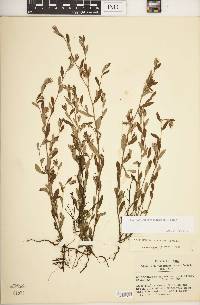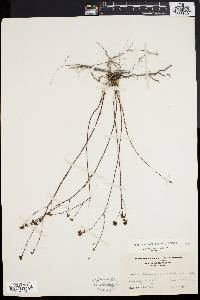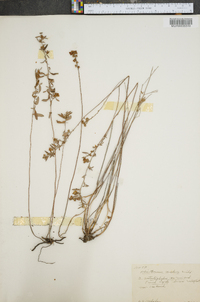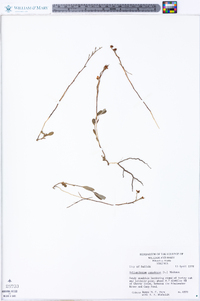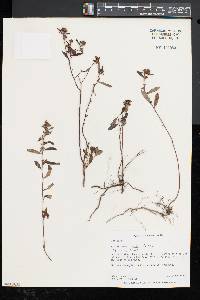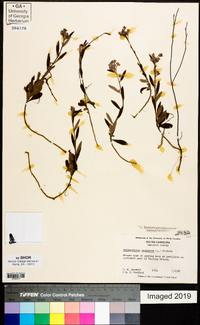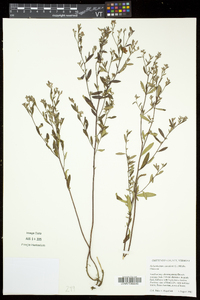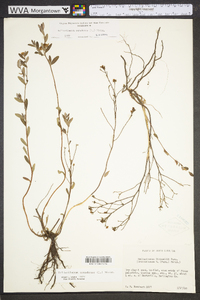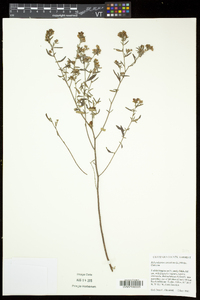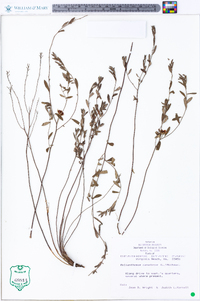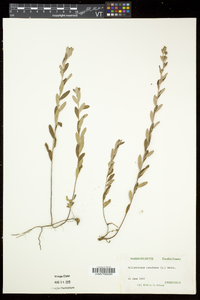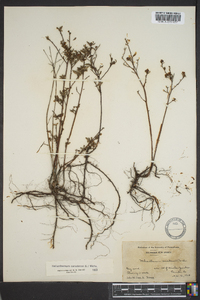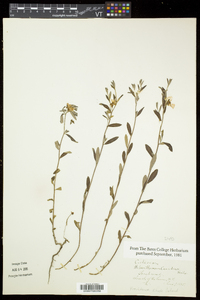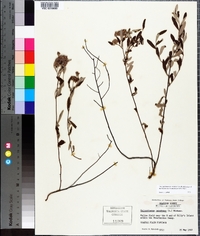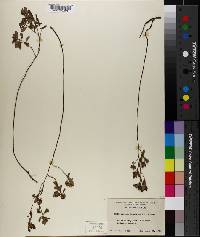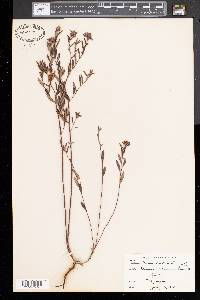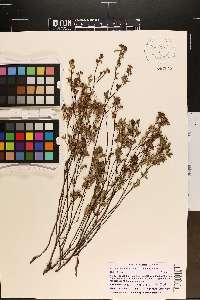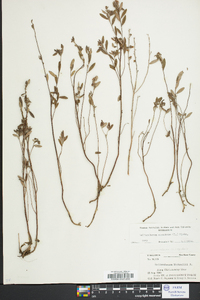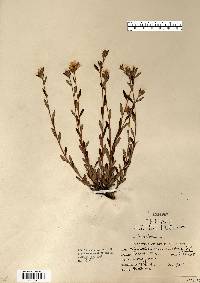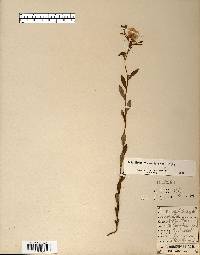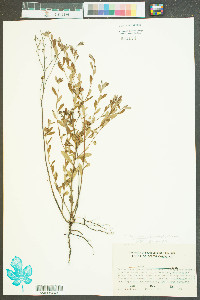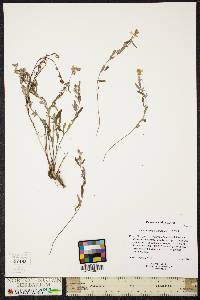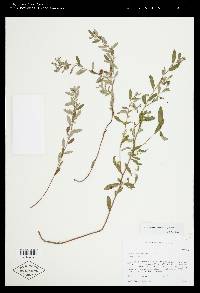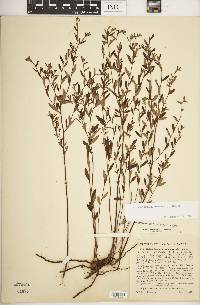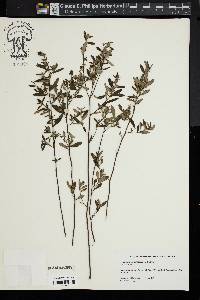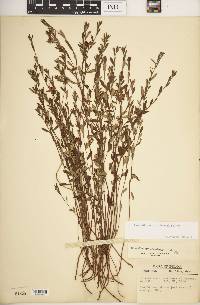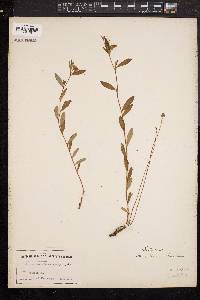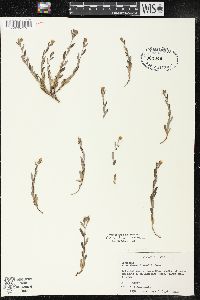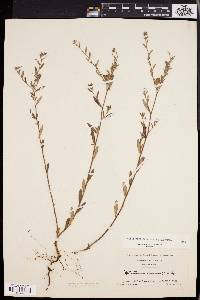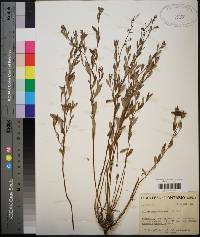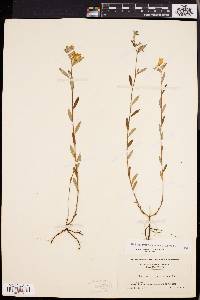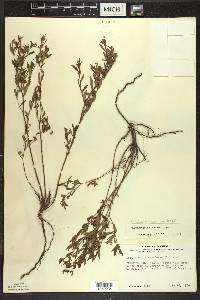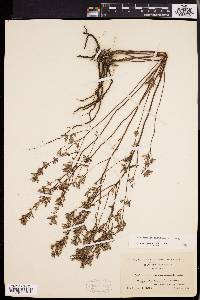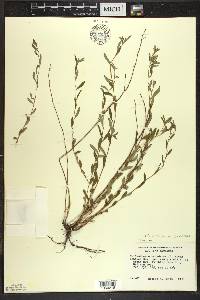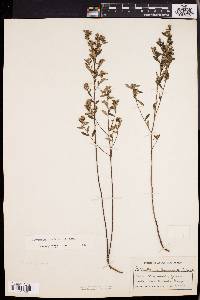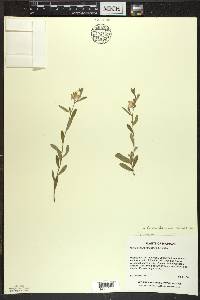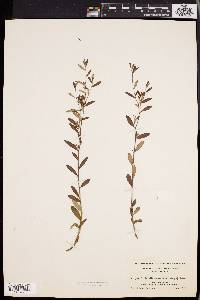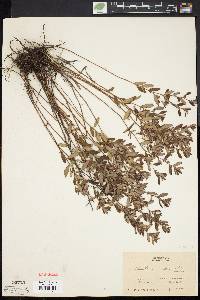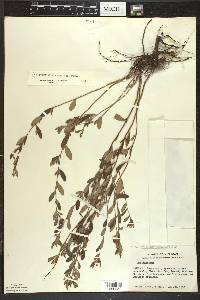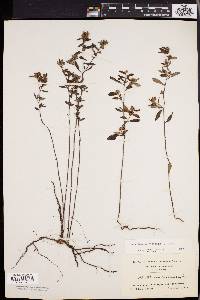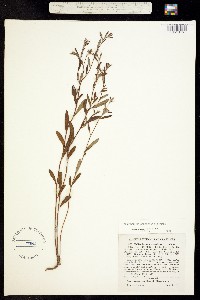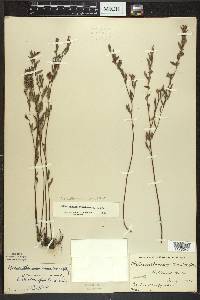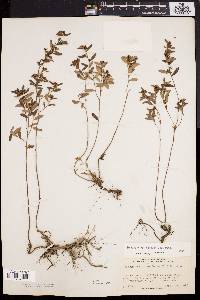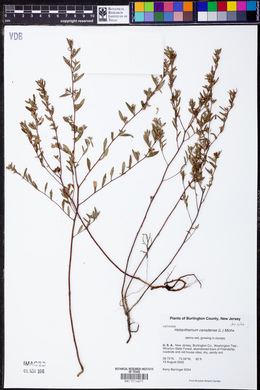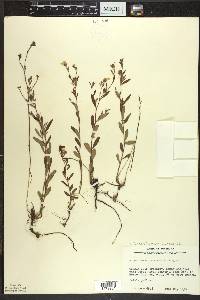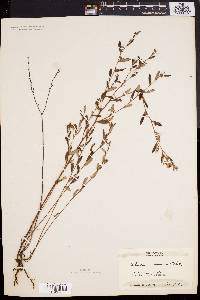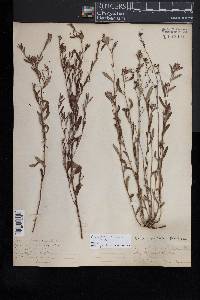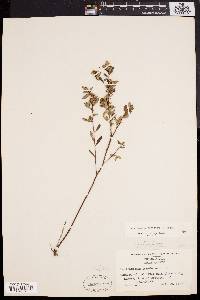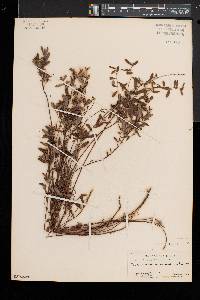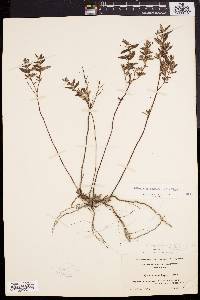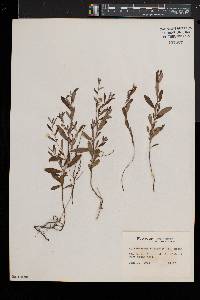
|
|
|
|
Family: Cistaceae
Canada frostweed, more...Long-Branch Frostweed, longbranch frostweed
[Helianthemum canadense (L.) Michx., moreHelianthemum canadense var. sabulonum Fernald] |
Perennial herb 15 - 60 cm tall Leaves: alternate, stalkless, non-toothed, somewhat shining green above, pale below, 2 - 4 cm long, 0.5 - 0.8 cm wide, narrowly elliptic, and hairy. The main stem leaves on younger plants have a sparse covering of branched star-shaped hairs mixed with 1 mm long unbranched hairs on the upper surface, but the underside is densely covered with only matted, grayish, branched, star-shaped hairs. Leaves of later branches and branchlets smaller, and with fewer if any long unbranched hairs. Flowers: of two kinds: a single, terminal, stalked, early, yellow, petal-bearing, showy, 2 - 3 cm broad, open, radially symmetric flower; and later, tight clusters of non-opening (cleistogamous) flowers arranged at tips and in leaf axils of newer, strongly ascending branches which overtop main stem. Sepals: five, in two series, outer two 4 - 5 mm long, inner three 6 - 9 mm long, both series covered with mixture of long, unbranched hairs and shorter, branched, star-shaped hairs. In the non-opening (cleistogamous) flowers the sepals only have branched hairs, but the sizes of the two sepal series differ greatly with the outer two sepals under 0.5 mm long and appearing as mere nubs almost fully attached to the inner three sepals except for a tiny separate tip. Petals: five, yellow, spreading, 0.8 - 1.5 cm long, rounded to widely oblong with rounded tips. The cleistogamous flowers do not have any petals. Stamens: ten to fifty (or more) in petal-bearing flowers, but only three to eight in cleistogamous flowers. Pistil: with one, single-chambered, superior ovary; and one, very short (up to 1 mm) style terminated by one rounded stigma. Fruit: short-stalked, hairless, single-chambered, somewhat rounded but narrow-tipped capsules which open from top to bottom and are enclosed by persistent sepals. The capsule size and number of seeds differ between the two types of flowers with those from the open petal-bearing flowers tending to be 6 - 7 mm tall and contain 30 - 45 seeds, but the cleistogamous flowers produce smaller capsules (2 - 3 mm tall) with five to ten seeds. Stems: several, more or less clustered, erect, mostly unbranched at first, but later with strongly ascending branches and branchlets, all surfaces with very short, fine, grayish hairs. Seeds: longer than wide, with pimpled or warty surface. Similar species: Helianthemum canadense is very similar to the later-blooming H. bicknellii, but that species only has branched star-shaped hairs on its surfaces; the early, showy, petal-bearing flowers are in groups of at least two at the stem apex and are normally not overtopped by the later-developing leafy branches with clusters of axillary cleistogamous flowers; the capsules are more egg-shaped without an abruptly narrowed and pointed tip; the capsules from the cleistogamous flowers are only up to 2 mm tall and contain only one to three minutely wrinkled seeds. Another very similar species, H. dumosum, occurs in Massachusetts and Long Island, New York, but it differs by having widely diverging branches, and it is the earliest blooming of the eastern North American species in this genus. Flowering: May to July Habitat and ecology: Somewhat common in sandy dry soils, especially in sandy black oak savannas, sand prairies, or other open sandy areas such as barrens. Occurence in the Chicago region: native Notes: This species is the earlier blooming of our two species. It usually starts two to three weeks before H. bicknellii. Both species share the characteristic of the early, petal-bearing flowers being open for only a single day before the petals fall. Author: The Field Museum Stems ±clustered and ±erect, at first anthesis simple or nearly so and mostly 1.5-3 dm, with a single (2) terminal open fl, later much-branched, to 3-6 dm, with strongly ascending branches and branchlets overtopping the main axis and bearing small terminal and axillary glomerules of small, cleistogamous fls; lvs of the main stem mostly 2-3(-4) cm נ5-8 mm, elliptic-oblanceolate or narrowly elliptic, the lower side densely stellate-tomentose, the upper greener, its shining surface visible through the sparse covering of mixed stellate and longer (1 mm) simple hairs, but these lvs deciduous, and those of the branches smaller and with fewer or no long hairs; cal of open fls 6-9 mm, with evident long, simple hairs as well as smaller stellate ones, the outer sep well developed, more than half as long as the inner; pet 8-15 mm; cal of cleistogamous fls merely stellate, the outer sep largely adnate to the inner, with a tiny free point; fr of open fls 6-7 mm, with 30-45 seeds, of cleistogamous fls 2-3 mm, with 5-10 seeds; seeds papillate; 2n=20. Dry, sandy soil or upland woods; Me. and N.S. to Minn., s. to Ga., Tenn., and Mo. Late May-June. (Crocanthemum c.; H. majus) Gleason, Henry A. & Cronquist, Arthur J. 1991. Manual of vascular plants of northeastern United States and adjacent Canada. lxxv + 910 pp. ©The New York Botanical Garden. All rights reserved. Used by permission. From Flora of Indiana (1940) by Charles C. Deam Generally in open black and white or black oak woods and usually in very dry sandy soil or rarely in dry gravelly soil. Infrequent. |

